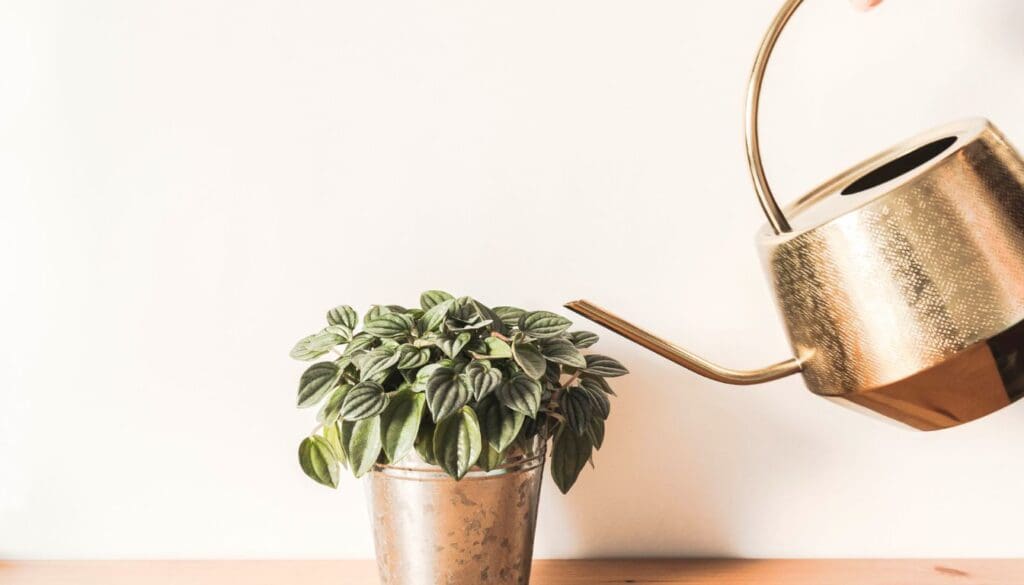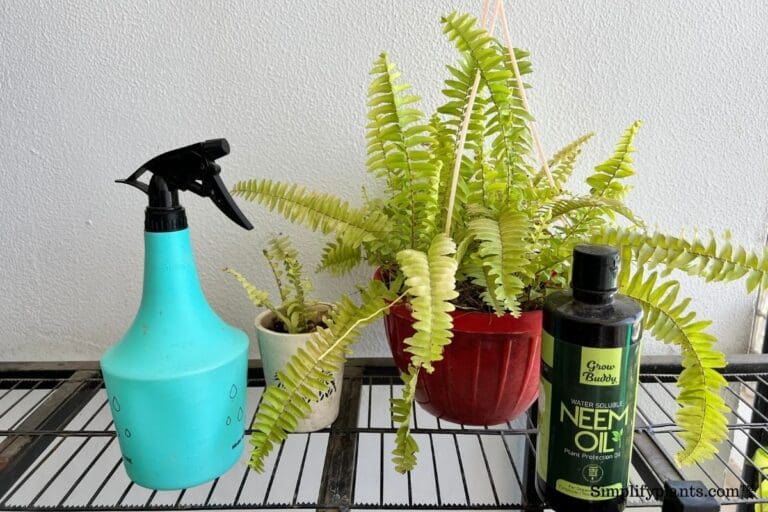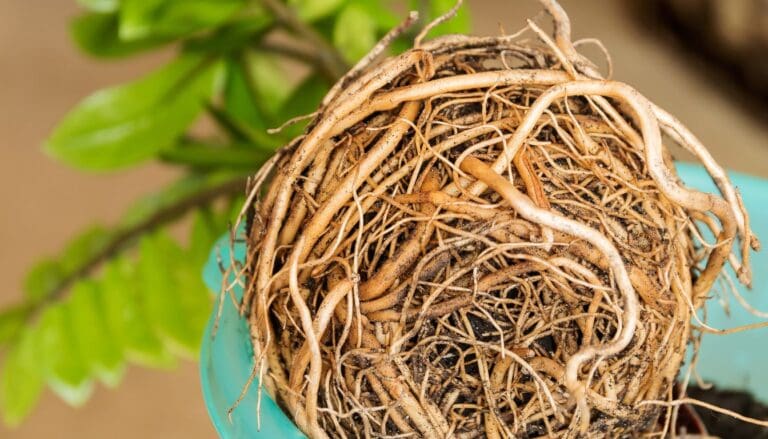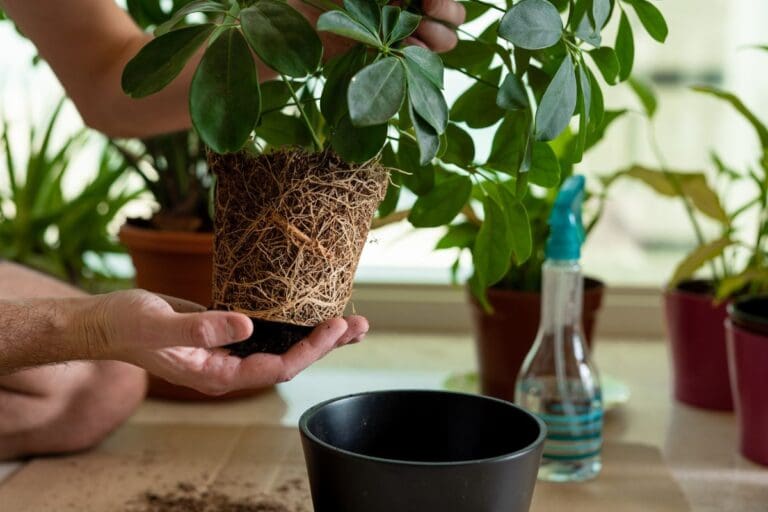Philodendron Dying? Possible Problem & Easy Fix!
It is not unusual to see problems in your philodendron. It can face challenges due to unfavorable conditions or improper care. However, we cannot learn without making mistakes.
If we have made any mistake leading to problems for the philodendron, we should focus on ways to revive the plant. So, in this article, we will learn how to save a dying philodendron.
To save a dying philodendron, you need to do the following:
- Remove any damaged foliage
- Check the soil for moisture and only water if the soil feels dry.
- Move the plant to a brightly lit spot where it gets enough indirect light.
- Mist around the plant and use a humidifier to maintain ideal humidity.
- Spray neem oil solution to get rid of possible pest problems.
Improper watering or fertilization, temperature swings, inadequate lighting, and a poor drainage system are the primary causes of dying philodendrons. You can start by providing your philodendron with the right conditions and taking the necessary steps to fix any possible problems.
If you can figure out the exact problem that is hindering the growth or leading to the wilting of your philodendron, half of your problems are solved, as you will now be able to fix the issue and save the plant.
Various other reasons can cause problems, such as low humidity, temperature fluctuations, pest infestation, wrong soil type, etc., for your philodendron.
Now, let’s discover how to revive your dying philodendron and the signs you cannot neglect.

Please note: Simplify Plants is reader-supported. Some links in the post are affiliate links and I get a commission from purchases made through links in the post.
Signs of a dying philodendron
Signs are indications that something is wrong with your philodendron. You must not neglect any sign, as noticing the signs in the initial stages will make it easy to revive your dying philodendron.
Let’s look at some common signs in philodendrons.
How to save a dying philodendron?
If your philodendron is dying and you want to save it, you must first figure out what problem the plant is having.
Just like any other living being, plants cannot survive unfavorable conditions, and due to that, you notice an unhealthy plant that seems to be dying.
The only way to save your philodendron is to assess all plant parts, including the soil and pot, and the external conditions.
If you don’t know the basic requirements of your philodendron, it is high time to know them so that you can stop making the mistakes that are leading your plant to death.
Now, let’s see some common mistakes that plant owners make with their philodendrons, what these mistakes can lead to, and how you can fix them or prevent them.
Overwatering your philodendron
Overwatering is extremely common, not only in philodendrons but also in all houseplants. It is usually a result of excess care or neglect.
Overwatering can cause some of the most severe problems in houseplants, such as root rot. However, the good news is that the plant gives out many signs that can tell you that it is heading toward root rot or already has it.
Although the philodendron is a tropical plant, it doesn’t mean that it requires heavy watering. It requires thorough watering, but doing it too often will make it overwatered.
You can heal your philodendron in a week if you take the proper steps and save it from dying.
Possible problems:
- Leaves turn pale green or yellow
- Wilted leaves
- New leaves will turn brown
- Falling leaves
- Pest infestation
Solutions:
- Stop watering till your philodendron recovers.
- Let the soil dry by placing the plant in bright indirect sunlight and exposing it to good airflow.
- Prune the damaged leaves.
- Check the roots by taking the philodendron out of the pot.
- Repot the philodendron after eliminating the rotten roots in a fresh soil mix in a new pot.
Prevention:
Even if your philodendron is not overwatered, keep the following points in mind so that you never overwater it.
- As the philodendron prefers slightly moist soil, you can water it when the three top layers of the soil dry.
- Insert a skewer or your finger inside the soil to determine if it is still wet. Consider using a moisture meter to make things easier.
- Does the pot have drainage holes? If yes, make sure that the holes are not blocked. If not, take the philodendron out of the pot and make drainage holes, or repot it in a pot with drainage holes.
- If the soil is not suitable for your philodendron, it will take time to get dry. Water the plant less in such a case or repot it using a well-draining peat-based soil mix that will allow excess water to drain out.
- Don’t follow a watering schedule blindly, and water less in winter.
Also read: Overwatering vs. Underwatering
Philodendron not getting enough water

This issue is not uncommon either. When someone is not at home, their plants can face this challenge. We need water, and so do our plants.
Lack of water causes dehydration in our plants as well, which, in turn, brings other problems.
You know that philodendron is forgiving and can tolerate under-watering for a few days, but it is bound to face problems if this goes on for a longer period.
Its health will deteriorate, and you might not see any growth either.
Possible problems:
- Droopy leaves
- Brown and crisp foliage
- Leaves falling off
- Slow growth
- Soil pulling away
Solution:
Reviving an underwatered philodendron is way easier than an overwatered philodendron.
- Remove the dry and crisp leaves that have turned brown.
- Water the plant thoroughly till you see water running out of the bottom of the pot.
- Mist the plant to add some moisture to the dry plant.
- Use the bottom watering method to water the plant.
- Allow the soil to get dry, and water the philodendron again.
Prevention:
You can follow these steps after your philodendron recovers. You must not let your philodendron get stressed again and again due to underwatering and dehydration.
- Don’t let the soil remain dry for too long. Philodendrons don’t enjoy dry soil and prefer it to be slightly moist.
- You can opt for a watering schedule to don’t forget to water the philodendron but keep it flexible and don’t water if the soil is still wet.
- Consider other factors, such as season and weather conditions, before deciding how much and when to water the philodendron.
Also read: How Much Water Does A Philodendron Need? (Water Requirement+How Often)
Philodendron is exposed to direct sunlight.

Most houseplants cannot tolerate direct sunlight as they are acclimated to live in a controlled environment of controlled temperature levels and indirect light.
Philodendrons cannot tolerate direct sunlight. It is an absolute NO, as even a little exposure can cause sunburn.
Possible problems:
- Pale and yellow leaves
- Stunted growth
- Brown and crisp foliage
Solution:
- First of all, find a different spot where the philodendron will not get exposed to direct sunlight.
- Trim all the affected leaves that have turned brown and yellow.
- Water the plant to hydrate it.
Prevention:
- If the philodendron is placed near a window, use blinds or curtains to filter the light.
- If the philodendron is placed outside, bring it indoors or place it in some shade to not get direct sunlight.
- Don’t relocate your philodendron outside the house suddenly, as that can cause not only sunburn but also shock the plant.
Also read: Can Philodendrons Get Sunburned? (+How To Fix)
Philodendrons are not getting enough light
People living in cold regions often don’t get enough light in their houses. The house’s location is vital in determining if your philodendron is getting sufficient light.
While climbing philodendrons can thrive in low light, non-climbing ones prefer medium to bright indirect sunlight.
The main problem with low light is that you won’t see much growth in the philodendron.
Possible problems:
- Slow growth
- Leggy growth
Solution:
- If your philodendron is not getting enough light, try to move it to a spot where it gets more indirect light.
- Use artificial lights if you don’t have any natural source of light in the house.
- If you want to prevent leggy or slow growth in your philodendron, avoid keeping it in dark spots that don’t get enough natural light.
Also read: What Kind Of Light Does A Philodendron Need? (Light Requirements)
Temperature swings

Philodendrons prefer a warm climate with high-temperature levels. If it doesn’t get the right temperature, it will not remain healthy.
Temperature swings can shock the philodendron as the plant cannot adjust to the sudden rise and fall in temperature.
Possible problems:
- Stress or shock
- Brown spots on leaves
- Shrunken leaves
Solution:
- If the temperatures are not suitable or there are fluctuations, the leaves and stems will be affected. You must prune those affected parts of your philodendron.
- Do not expose the philodendron to direct sunlight, which will raise the temperature levels.
- When temperatures fall below average during winter, relocate the philodendron to a warmer spot where it experiences higher temperatures.
Prevention:
- Try to maintain temperatures between 65-80°F.
- Temperatures below 50°F will be too harsh for your philodendron and can shock the plant, so don’t expose it to such low temperatures.
- Relocate your philodendron during winter and place it a few feet away from the fireplace, furnace, or heating vent.
- Protect the philodendron from cold drafts and frost in winter by placing it away from the window.
Also read: Where Do You Put A Philodendron? (Ideal Spot+Factors To Consider)
Low humidity

Philodendrons are humidity-loving plants. They are exposed to much humidity in their native lands, and high humidity levels help them grow.
But, the plant will struggle if the humidity levels go down. Therefore, it is a must to provide adequate humidity to your philodendron.
Possible problems:
- Tips of the leaves are turning brown
- New leaves are smaller
- Dry leaves
Solution:
- Try maintaining high humidity levels of 70-90% around the philodendron.
- You can mist the plant occasionally to increase the humidity.
- Group the philodendron with other humidity-loving plants.
- Do not expose the philodendron to direct sunlight.
- You can use a humidifier to maintain the high humidity levels around your philodendron.
Prevention:
- Avoid placing the philodendron under direct sun.
- Maintain high humidity levels with the help of a humidifier, misting, or grouping with other plants.
- Ensure that you are giving your philodendron enough water.
- Keep the philodendron on a pebble tray to increase the humidity for the plant.
Also read: Do Philodendrons Like To Be Misted? (+Ways To Boost Humidity)
Pest infestation

Unfavorable conditions such as low light and underwatering can create an ideal environment for the pests. Pests can attack your philodendron and cause many problems that can lead to a dying philodendron if you don’t notice the signs soon enough.
Pests populate quickly and can take over the plant quickly if you don’t take any action.
Possible problems:
- Speckled or spotted leaves
- Distorted growth
- Falling leaves
Solution:
- First, isolate the philodendron from all the other plants so that they don’t get pests on them.
- Prune the affected leaves, stems, or roots.
- Mix neem oil with water. Spray this solution all over the philodendron.
- Don’t forget to spray on the undersides of the leaves, as that is the hiding area of most pests.
- Spray this for at least two weeks, and then check if the pests remain on the philodendron.
- You can also use dishwashing soap by diluting it in water and applying it to the affected parts.
- Soak cotton balls in rubbing alcohol and dab them on the affected areas of the philodendron.
- You can handpick the bugs that you can see on the plant but make sure to use gloves.
Also read: How Do I Get Rid Of Bugs On My Philodendron? (+Bug Identification)
Final words
Your philodendron can face challenges but don’t be disheartened if you notice anything abnormal. There is always a way to revive a dying philodendron by understanding the problem and finding the solution.
You need to take care of the basic requirements such as giving enough indirect light, watering when the top layers of the soil get dry, and using well-draining soil to grow the plant. Fertilize during the growing season, repot every 2-3 years, and prune the plant to avoid overgrowth and eliminate the damage.
If it is too late to revive your philodendron, try to find a healthy branch and take a cutting. Plant it in fresh soil mix and grow a new philodendron plant from it.
Ensure you don’t repeat the mistakes you made for the previous philodendron, and you will soon have a healthy and thriving plant.
Ref: Wikipedia.
Recommended Garden Supplies
| Product Image | Our Recommended Gardening Supplies | Check Offers! |
|---|---|---|
Top Top
Top
Top
Top
Top
Top
Top
Top | rePotme Houseplant and Tropical Classic Potting Soil Mix | Check Offer On Amazon |
 Top
Top
Top
Top
Top
Top
Top
Top | Espoma Organic Indoor Plant Food | Check Offer On Amazon |
 Top
Top
Top
Top
Top
Top
Top
Top | GooingTop LED Grow Light 6000K Full Spectrum Clip Plant Growing Lamp | Check Offer On Amazon |
 Top
Top
Top
Top
Top
Top
Top
Top | Soil Moisture Meter | Check Offer On Amazon |
 Top
Top
Top
Top
Top
Top
Top
Top | Govee Hygrometer Thermometer, Bluetooth Enabled! | Check Offer On Amazon |
 Top
Top | LEVOIT Humidifiers for Large Room(Best For Plants) | Check Offer On Amazon |
 Top
Top
Top
Top
Top
Top
Top
Top | Upgraded DIY Automatic Drip Irrigation Kit, 15 Potted Houseplants Support | Check Offer On Amazon |
 Top
Top
Top
Top
Top
Top
Top
Top | Stainless Steel Heavy Duty Gardening Tool Set | Check Offer On Amazon |
 Top
Top
Top
Top
Top
Top
Top
Top | Bonide Insecticidal Soap | Check Offer On Amazon |
 Top
Top
Top
Top
Top
Top
Top
Top | Bonide 32 oz Spray Neem Oil for Organic Gardening | Check Offer On Amazon |
 Top
Top
Top
Top
Top
Top
Top
Top | Garden Safe Fungicide | Check Offer On Amazon |





